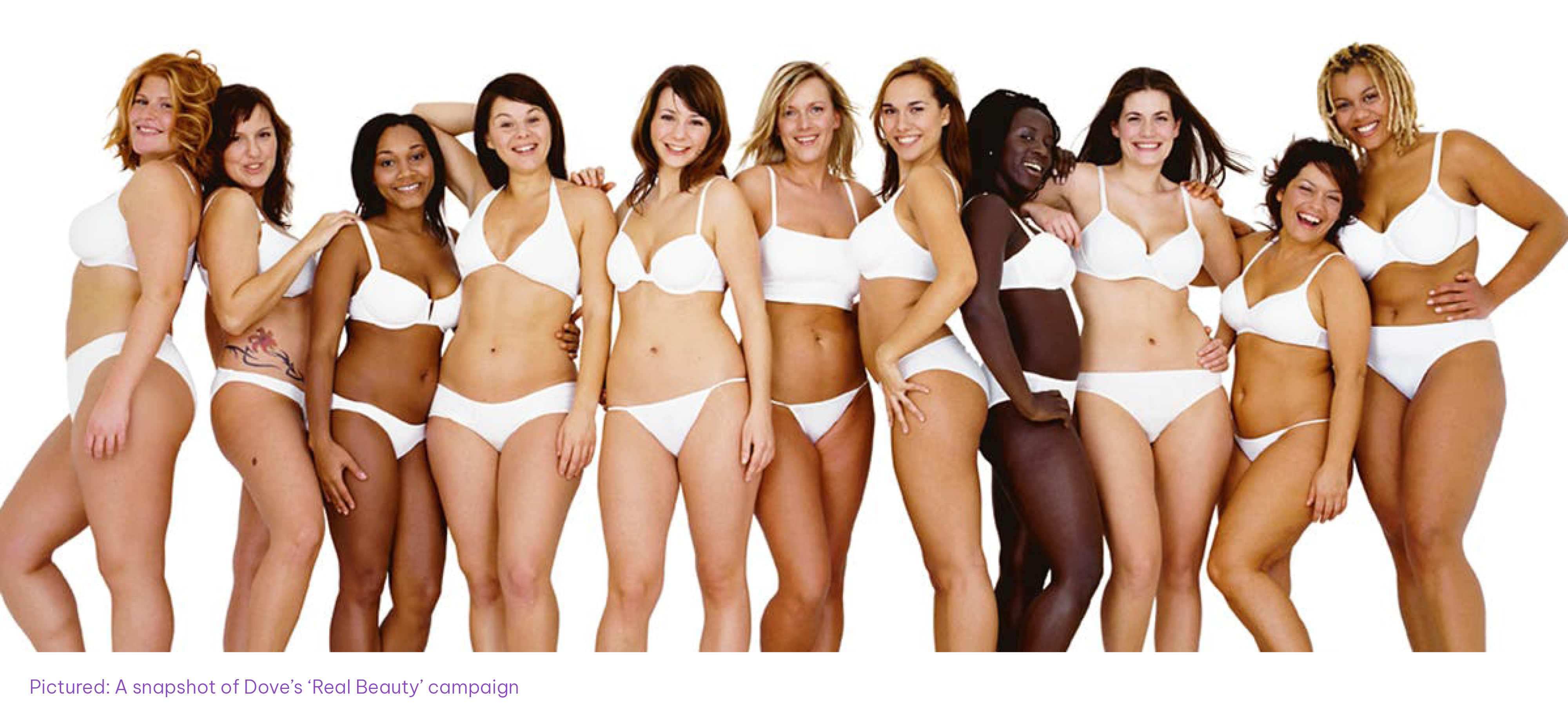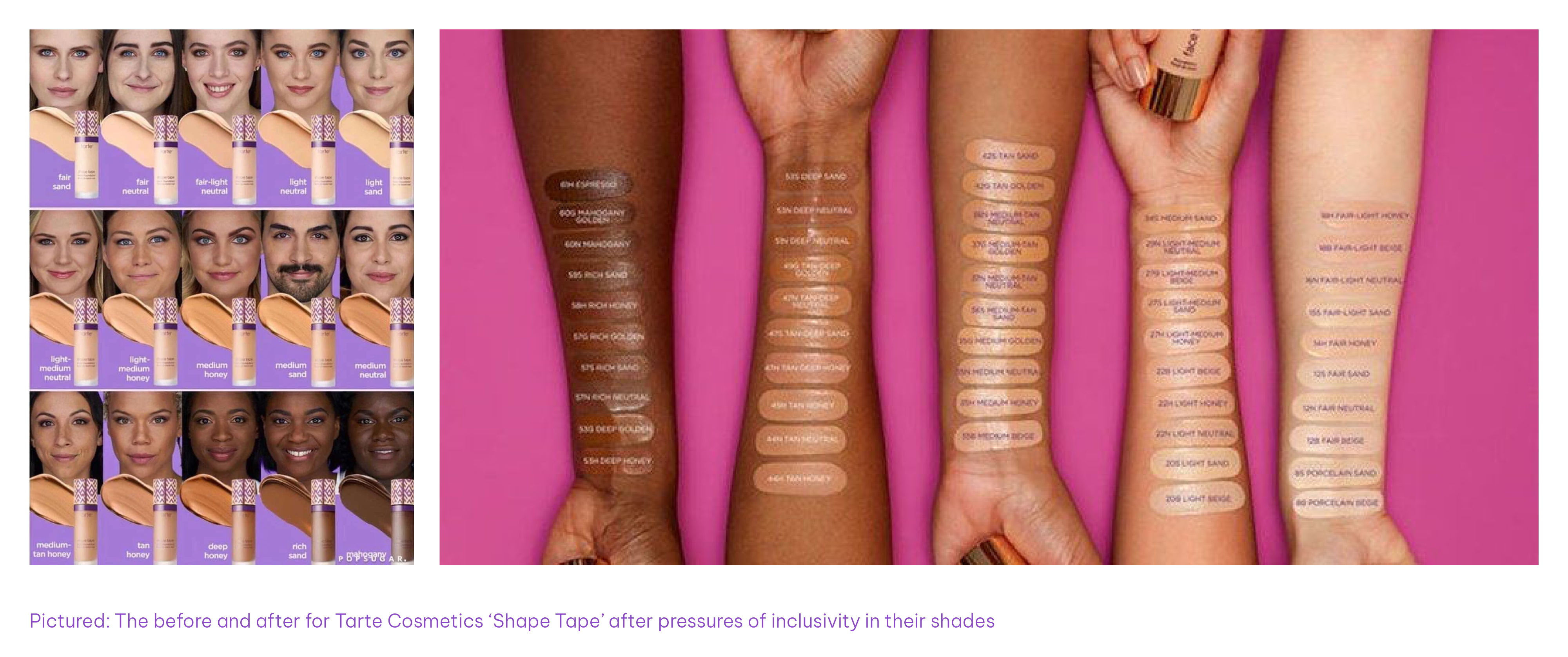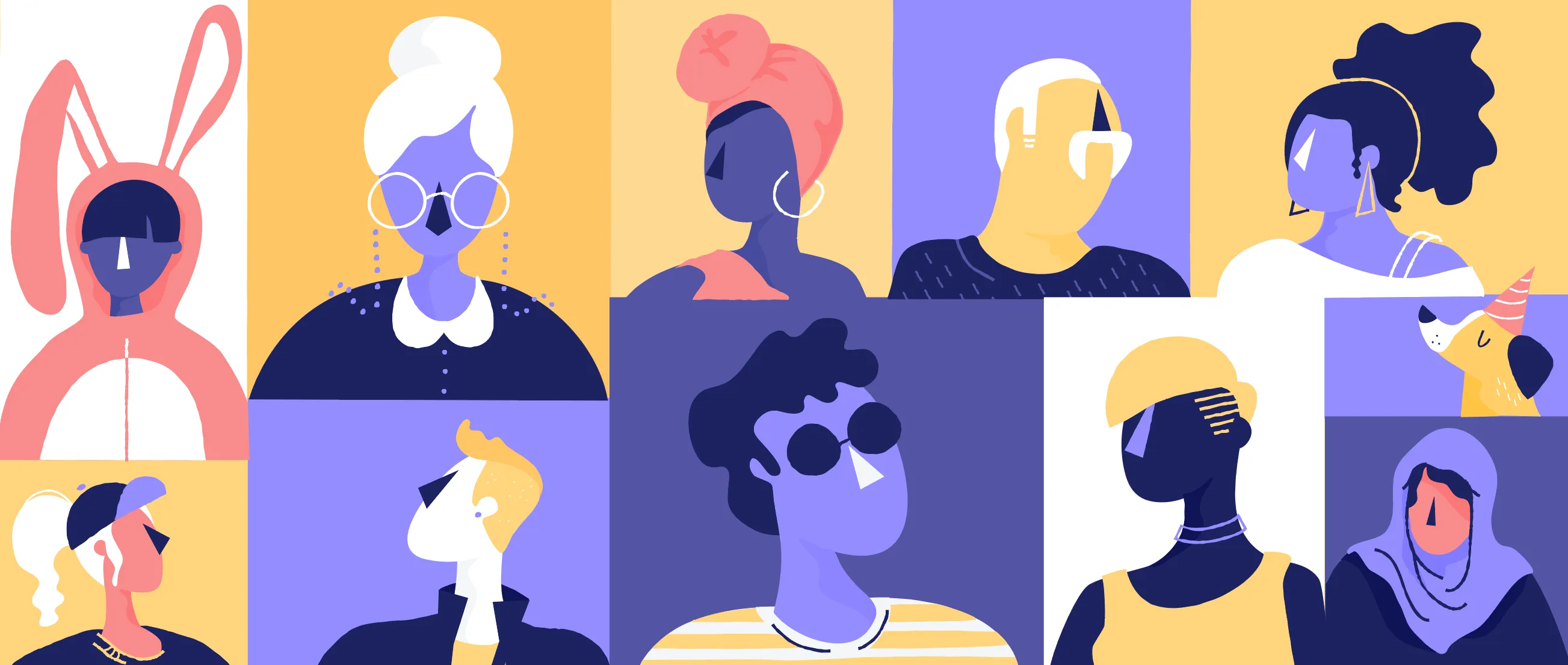Blog

October 2025
Inclusive graphic design celebrates diversity and ensures all users, regardless of their abilities, can not only access content meaningfully but see themselves represented. It goes beyond aesthetics to create visuals that represent the varied life we share, and cater to a wide array of users, including people with disabilities. Inclusive graphic design is both imperative and incredibly powerful.
While accessibility is an intrinsic and necessary part of inclusivity, here we focus more on the inclusive aspect, rather than the specifics of accessibility. Read more about the difference between the two here.
In the context of design, inclusivity aims to create experiences where individuals of all backgrounds, cultures, abilities, genders, circumstances, and so on, feel welcome and represented. Accessibility is primarily about the removal of barriers to make your content and products usable by all individuals, particularly for those with diverse.
Inclusive graphic design creates content that engages everyone – no matter their ability, background, or circumstances. It's not just the right thing to do from a moral standpoint, it's also a smart move for brands that want to connect with a wider audience and engage with those who feel underrepresented.
When design is inclusive, more people can access your content, engage with your message, and feel like they've been considered. That sense of being understood matters - and it's what helps build long-term engagement and brand loyalty.
We’ve all heard the phrase if you can see it, you can be it, and this is why representation is so important. Inclusivity tells – and shows – more than one side of the story. For example, the US might be said to have a monopoly on pop culture with movies, tv shows and music being shaped specifically to the American experience. However, this isn’t relatable to a vast majority of people who haven’t grown up in America. When you consume media that’s produced locally to you, you get that “uh-huh!” moment – it instantly changes the way you interact with or view it – you’re more engaged. You probably also have that moment where you realise how often that doesn’t happen, and from there, start to notice the lack of representation.
It can be a little disheartening to feel a lack of representation in pop culture but for minorities across all demographics this is the reality they face daily. In our day-to-day media, we know there is a lack of representation of BIPOC (Black, Indigenous and People of Colour), different genders and orientations, physical abilities, age and so on.
Inclusivity is critical to our development as a society. While it’s important to consider it as a graphic designer, inclusivity shouldn’t be limited to our professional lives – it is equally important to consider inclusivity and diversity in everything we do. These examples demonstrate the societal benefits that occur when businesses prioritise inclusivity and champion diversity. There are only good things to be gained from thrusting inclusivity into the mainstream.
Everyone remembers the power of Dove’s “Real Bodies” campaign from the early 2000s, where they challenged traditional beauty standards. It was an incredible success and a very memorable example of showcasing different body types and ethnicities. It created huge waves and opened a lot of conversations around diversity, body positivity and representation in the personal care industry.

In the late 2010s and early 2020s there was a push for representation in the cosmetics industry sparked by the lack of shades available for women of colour. Popular brands would have 20 shade options ranging from porcelain to a medium tan, but only one or two darker shades, completely excluding people of colour from their product ranges. Rihanna’s line of makeup, Fenty, revolutionised representation in the beauty industry, launching in 2017 with as many darker skin tone shades as lighter and a variety of base colour tones. This led to huge success and widespread praise on how to ‘do it right’.
Kim Kardashian’s shapewear brand, Skims, also launched with a varied range of skin tone shades. This changed the game as historically shapewear had only been produced in one shade – a peach colour referred to as ‘nude’.
As consumers increasingly used social media to call out brands that lacked representation – and championed those that got it right – conversations around skin tone and inclusivity gained momentum. This collective advocacy led to a broader cultural shift, challenging long-standing norms in the consumer space. One major outcome was the reconsideration of the word “nude”. Traditionally used to describe a light-beige colour, “nude” failed to reflect the diversity of real skin tones. Consumers pushed for brands to redefine “nude” as a spectrum to include all complexions and ultimately led to brands expanding their product ranges and rethinking how they market skin-toned items.

Another excellent example of representation and inclusivity in the content we consume is the TV show Love On The Spectrum. In 2020, when dating and reality TV shows were at their peak, Australia created the series that follows the lives of adults living with a variety of spectrum disorders navigating the world of love and dating. The show captured the hearts of audiences globally, even creating an immensely popular US spin off. The show takes a wholesome approach to dating while celebrating the rich, complex lives of adults living with spectrum disorders and neurodivergence. It highlighted a lot of ways people on the spectrum interact and respond to social queues in a world built for neurotypicals and helped destigmatise what it is like to be on the spectrum. The show drove meaningful conversations, sparked understandings around the different needs of people and challenged the stereotypes associated with people with autism.
The video gaming community has always been an incredibly inclusive space. Developers regularly build mods, add ons and patches to increase customisability of games – especially in open world building games. A standout in this space is The Sims. Forget making your hair pink and creating customisable outfits, the latest mod includes disability and transgender representation. There's a repertoire of prosthetics, wheelchairs, walking aids, hearing aids and breathing tubes, just to name a few. And it doesn't stop there, there’s a vitiligo skin mod, scars and other physical marks, including top surgery scars for wider gender representation. The Sims is a great example of developers listening to their audience, paying attention to representation gaps and offering more and more customisability for self-expression and representation.
A problem we see often in design is a lack of inclusivity. Over the last 10 years or so, when discussions around diversity and representation started, some businesses got a little afraid of missing a demographic or were trying too hard and this is how ‘The Purple People’ happened. You would have seen it many times – brands thinking that if they make all of the people purple, they are fixing the issue. By making everyone a fantasy colour instead of pinpointing specific ethnicities, no one is missed out, everyone is happy. Done. Except it’s not. This is another form of whitewashing (even when hair styles, genders and religious dress are brought in). It’s removing race and similar to the “I don’t see colour” mentality. It doesn’t approach inclusivity with an equity mindset. If you’re “not seeing race or colour” then you’re also not seeing the disparity of opportunities, the rich culture, the history of so many people. This is the same for disability representation – a wheelchair isn’t the only indicator of a physical disability.
These examples are ways in which inclusivity has been done without a realistic understanding of representation, as well as being performative or tokenistic.

Image Credit – Illustrator Meg Robichaud.
These days, we have access to so much data about our users, audiences, demographics, regions and catchments that tokenistic and unrealistic representation just doesn’t cut it.
Marketing analytics around users and audience paints a pretty vivid picture of the groups of people who should be represented in our works. Census and government data is freely available and also an incredibly powerful resource. If your campaign is running in an area with a high population of people with English as a second language, incorporate bi-lingual ads into the programme, or subtitle language options, etc. When selecting stock photos or planning a photoshoot, look to include a holistic and accurate representation of the area you’re working in.
This can be a lot more challenging when your designs or campaigns are on a national or global scale rather than local – however large global companies still have local area marketing (LAM) teams. Personalise your LAM packs to be relevant to local audiences, rather than using a broad-brush stroke. It’ll resonate with the people located in the area you’re targeting and help with your brand’s authenticity.
If you aren’t trying to reach and represent a diverse and authentic spread of people, you’re limiting yourself from potential audiences, and isolating people unnecessarily. There is such a rich mix of different walks of life and when they’re considered it will only make us more empathetic, creative and interesting. Challenge yourself if you feel like your work is too narrow or tokenistic. Performative design and campaigns will be picked apart (as they should) so it’s best to embed inclusivity into your growth strategy. This approach means inclusivity is baked in from the inception of a campaign and ensures it is executed with understanding and accuracy.
Analytics tools to measure and manage your demographics are extremely useful for painting a clear picture of who your audience is, so using these to benchmark your current demographics is a great way to establish a baseline.
Once your campaigns and comms start gaining momentum you should see both an increase in meaningful engagement as well as your demographics shifting and expanding.
Inclusivity should be considered from the beginning of your project, and considered throughout the entire execution, not bolted on at the end. Authentic and accurate representation is important to resonate with a full audience. If you find that your audience is narrow it’s worthwhile looking at why you have a lack of diverse people interacting with your brand, product or service. Find ways to reach new audiences and people of different walks of life.
It also helps to build a team that brings a variety of perspectives. When people with different backgrounds, abilities, and viewpoints work together, they notice different things. The collaborative process almost always leads to stronger outcomes.
If you’re having empathetic and realistic conversations around accessibility and inclusion from the very first stage of the design process this will help to foster and nurture an environment that is natural, comfortable and welcoming for everyone. If you’re putting effort and attention into your work and outputs in this space, then the same messaging and thought process will filter out into your everyday interactions.
We're always up for a coffee and conversation.
Fill in the form, drop us a line at info@transformcomms.co.uk, or call us on 01225 863846. Better yet, drop in to our converted barn and film studio near Bath and Bristol.
Let’s transform.
Together.